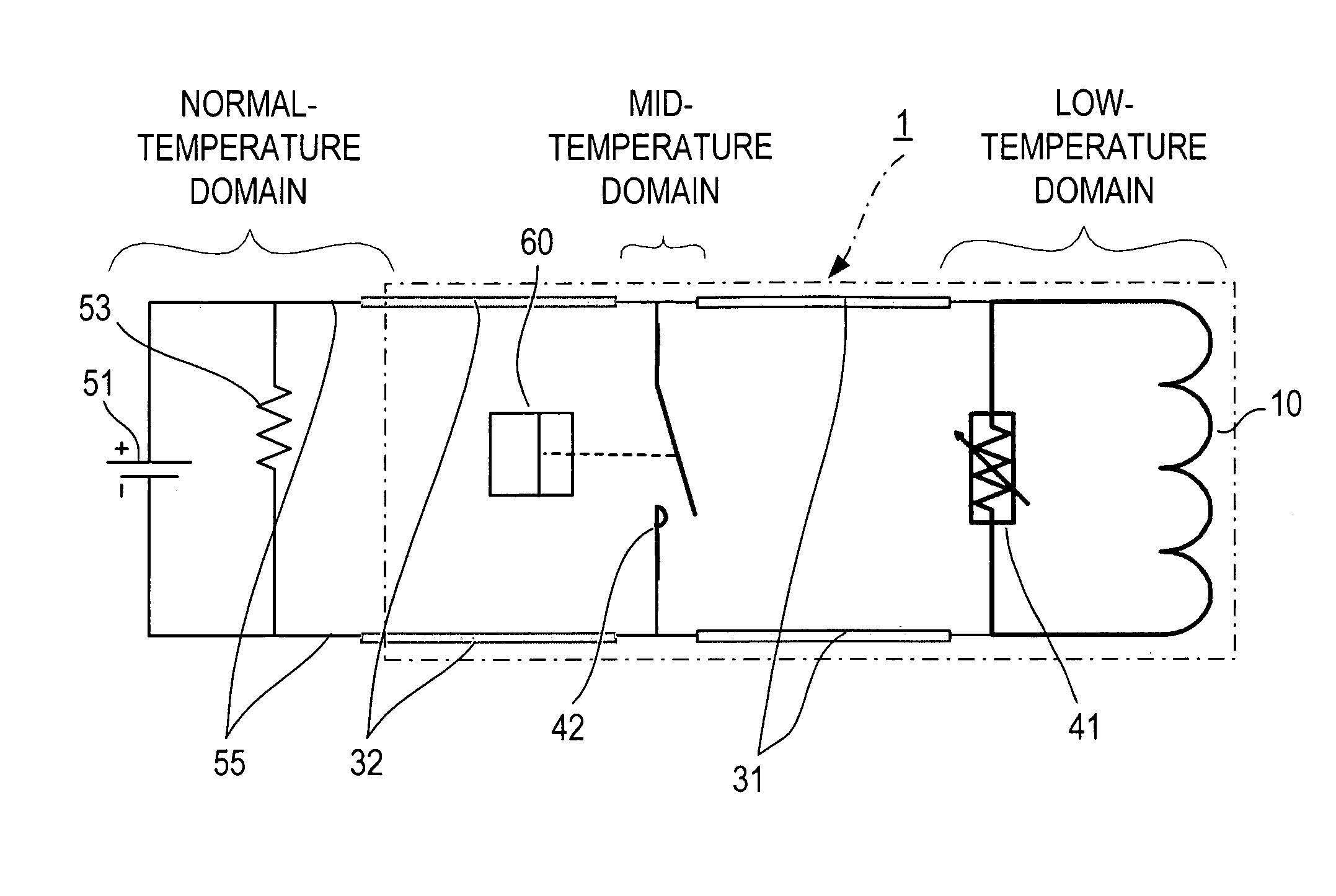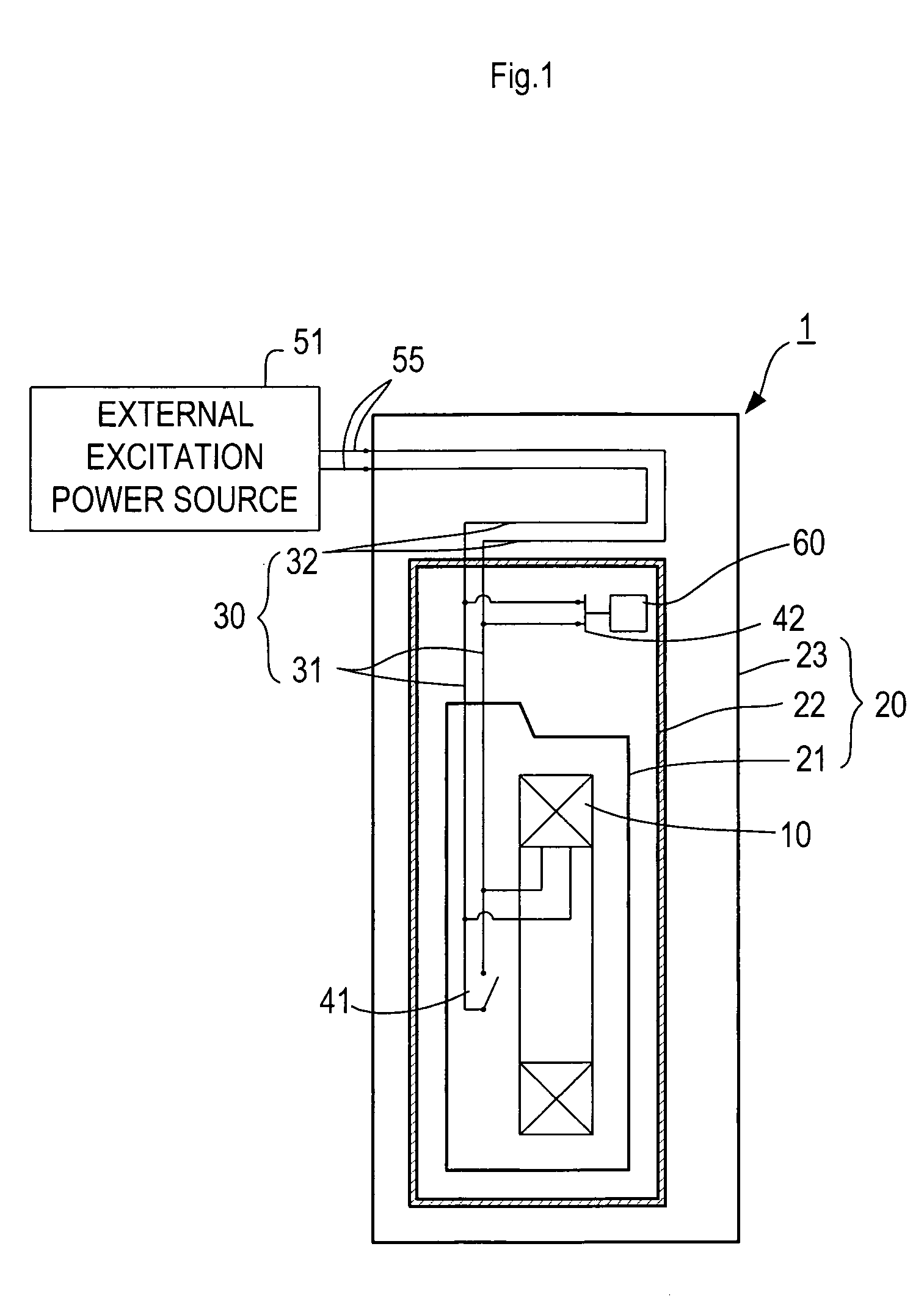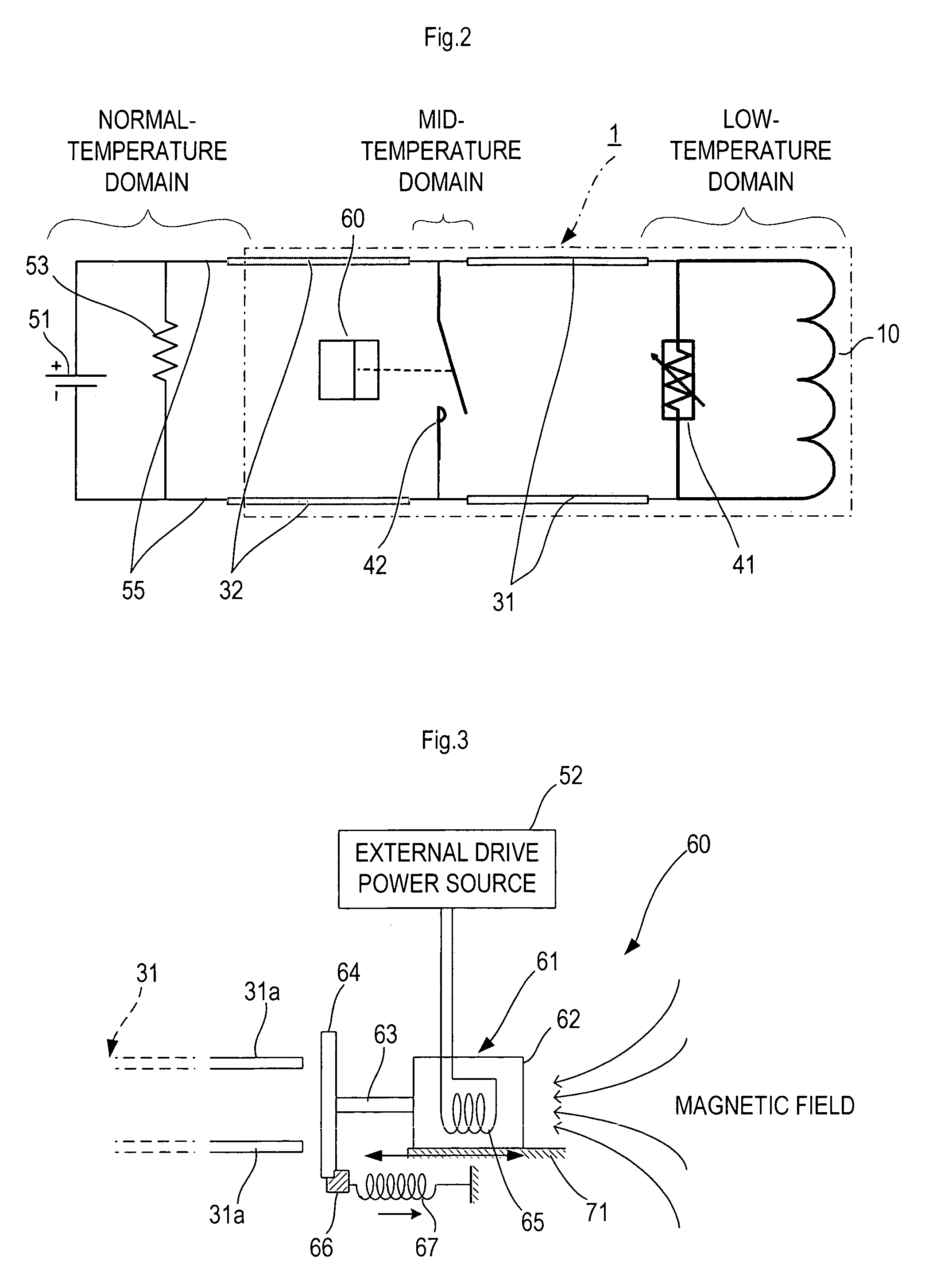Superconducting magnet apparatus
a superconducting magnet and apparatus technology, applied in the direction of superconducting magnets/coils, permanent superconductor devices, magnetic bodies, etc., can solve the problems of difficult to reduce contact resistance sufficiently, increase the load of an external refrigerator which cools the inside of the superconducting magnet apparatus, and take time to cool or heat between on-state, etc., to achieve the effect of reducing the load of the refrigerator that cools the current lead, reducing heat generation, and absorbing
- Summary
- Abstract
- Description
- Claims
- Application Information
AI Technical Summary
Benefits of technology
Problems solved by technology
Method used
Image
Examples
first embodiment
[0044
[0045]The present embodiment describes a superconducting magnet apparatus for Maglev according to the present invention. FIG. 1 is an explanatory view (cross sectional view) showing a schematic constitution of the superconducting magnet apparatus. FIG. 2 is an explanatory view showing a schematic electric constitution of the superconducting magnet apparatus.
[0046]As shown in FIG. 1, the superconducting magnet apparatus 1 of the present embodiment comprises a vacuum container 20 housing a superconducting coil 10 inside the vacuum container 20, and a current lead 30 placed in the vacuum container 20 for supplying an electric current to the superconducting coil 10 from an external excitation power source 51.
[0047]The vacuum container 20 comprises an inner tank 21 in which a low-temperature domain is formed and the superconducting coil 10 is placed, a heat shield 22 covering the inner tank 21 in which a mid-temperature domain whose temperature is higher than the low-temperature dom...
second embodiment
[0064
[0065]In the above first embodiment, the driving mechanism 60 utilizing the normal conducting solenoid 65 is employed as a driving mechanism to turn on and off the mechanical switch 42. The present embodiment employs a driving mechanism that is different from the first embodiment. FIG. 4 is a schematic view of the driving mechanism, which corresponds to FIG. 3 in the first embodiment. The basic constitution of the present superconducting magnet apparatus, the manner of supplying electric power, etc. are substantially identical in principle with those in the first embodiment. Therefore, the identical components are numbered the same and an explanation thereof is not repeated.
[0066]As shown in FIG. 4, a driving mechanism 80 in this embodiment comprises a slide mechanism 81 that performs sliding movement by applying a given voltage to an ultrasonic motor from the external drive power source 52 to drive the same.
[0067]The slide mechanism 81 comprises an ultrasonic motor 82 includin...
PUM
| Property | Measurement | Unit |
|---|---|---|
| temperature | aaaaa | aaaaa |
| temperature | aaaaa | aaaaa |
| temperature | aaaaa | aaaaa |
Abstract
Description
Claims
Application Information
 Login to View More
Login to View More - R&D
- Intellectual Property
- Life Sciences
- Materials
- Tech Scout
- Unparalleled Data Quality
- Higher Quality Content
- 60% Fewer Hallucinations
Browse by: Latest US Patents, China's latest patents, Technical Efficacy Thesaurus, Application Domain, Technology Topic, Popular Technical Reports.
© 2025 PatSnap. All rights reserved.Legal|Privacy policy|Modern Slavery Act Transparency Statement|Sitemap|About US| Contact US: help@patsnap.com



